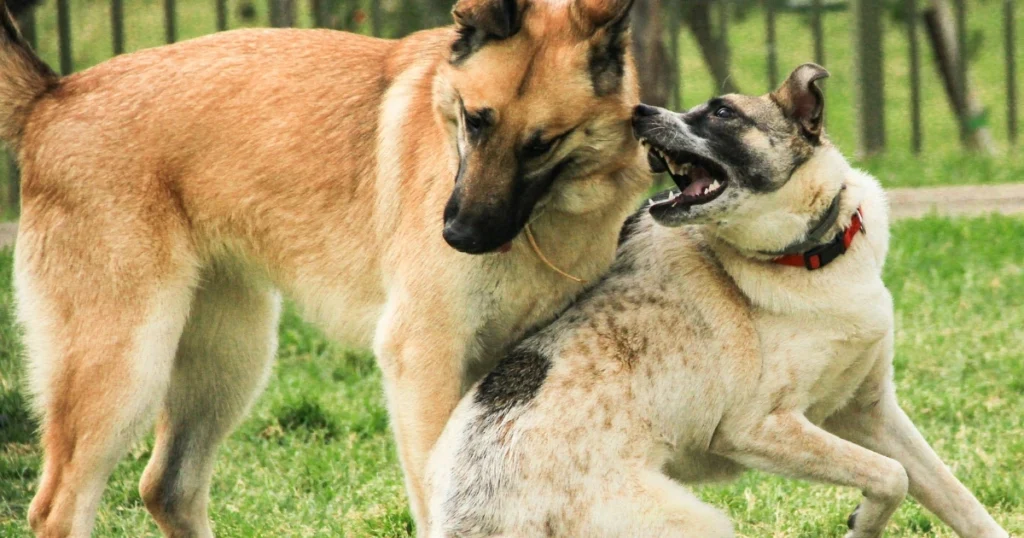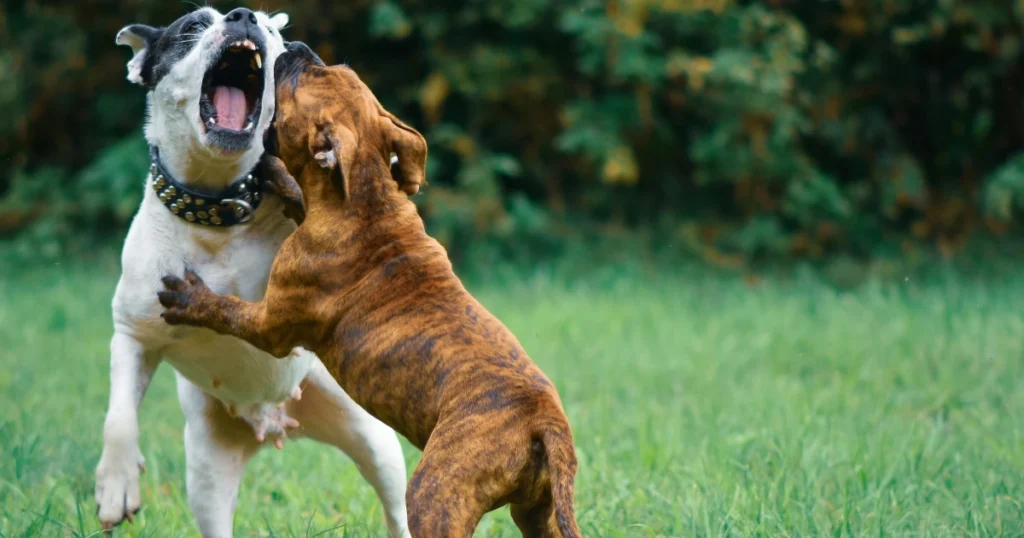The Most Aggressive Dog Breeds: Understanding Their Behavior
Table of Contents
Introduction: Demystifying “Aggression” in Dogs
When searching for information about canine behavior, many pet owners find themselves overwhelmed by conflicting reports about the most aggressive dog breeds. The truth is far more nuanced than simple breed labels suggest, and understanding dog aggression requires looking beyond stereotypes to examine the complex factors that influence canine behavior.
The Problem with Labels: Why “Aggressive Breeds” is a Misnomer
The concept of inherently “aggressive breeds” oversimplifies the intricate nature of canine behavior. While certain dog breeds prone to aggression may have statistical tendencies based on their breeding history, individual dogs within any breed can vary dramatically in temperament and behavior patterns.
Labeling entire breeds as dangerous creates several problems:
- Oversimplification: It ignores the multitude of factors that influence behavior
- Discrimination: It can lead to unfair treatment of well-behaved dogs
- False security: It may cause people to underestimate risks from other breeds
- Missed opportunities: It prevents potentially wonderful dogs from finding homes
Our Commitment to Responsible Information
This guide draws from veterinary behaviorists, certified dog trainers, and peer-reviewed research to provide balanced, evidence-based information. We consulte experts from the American College of Veterinary Behaviorists and reference data from organizations like the American Veterinary Medical Association (AVMA) and Centers for Disease Control (CDC).
What This Guide Covers
| Section | Key Topics |
|---|---|
| Understanding Aggression | Types, triggers, and the aggression spectrum |
| Influencing Factors | Genetics, environment, training, and health |
| Statistical Analysis | Dog bite data interpretation and limitations |
| Responsible Ownership | Prevention, management, and safety protocols |
| Breed Legislation | BSL controversy and alternatives |
| Professional Help | Finding qualified behaviorists and trainers |
What is Canine Aggression? Understanding the Spectrum

Defining Aggression: From Warning Signals to Bites
Canine aggression exists on a spectrum, from subtle warning signals to actual physical contact. Understanding dog aggression begins with recognizing that most dogs prefer to communicate their discomfort through body language before escalating to biting.
The Ladder of Aggression typically includes:
- Subtle signals: Lip licking, yawning, turning away
- Clear warnings: Growling, showing teeth, stiff body posture
- Intense warnings: Lunging, snapping without contact
- Physical contact: Biting with varying degrees of pressure
Most dogs will only bite as a last resort when their earlier warning signals have been ignored or misunderstood.
Types of Aggression
Different types of aggression have distinct triggers and require specific management approaches:
- Fear-based aggression: The most common form, triggered by perceived threats
- Territorial aggression: Protecting property, family, or resources
- Possessive/Resource guarding: Defending food, toys, or valued items
- Pain-related aggression: Response to physical discomfort or medical issues
- Predatory aggression: Chasing and catching prey-like movements
- Social aggression: Conflicts with other dogs over status or resources
- Redirected aggression: Misdirected frustration toward an available target
The Importance of Canine Body Language
Reading dog body language is crucial for preventing aggressive incidents. Key warning signs include:
Stress signals:
- Panting when not hot or exercised
- Excessive drooling
- Pacing or restlessness
- Loss of appetite
Direct warning signs:
- Fixed stare or “whale eye” (showing whites of eyes)
- Raised hackles
- Stiff, forward-leaning posture
- Growling or showing teeth
Factors Influencing Dog Behavior & Aggression

Genetics & Breed Predispositions
While individual temperament matters most, certain breeds were historically developed for specific purposes that can influence behavioral tendencies. This doesn’t mean these dogs are inherently dangerous, but rather that they may require more experienced handling and training.
Breeds often cited in discussions of aggression include:
| Breed Group | Historical Purpose | Behavioral Considerations |
|---|---|---|
| Pit Bull types | Bull baiting, dog fighting | High prey drive, strong bite inhibition when properly socialized |
| Rottweilers | Cattle driving, guarding | Protective instincts, requires early socialization |
| German Shepherds | Herding, protection work | High intelligence, strong work drive |
| Chow Chows | Temple guarding | Independent nature, less demonstrative with affection |
| Akitas | Hunting, guarding | Strong-willed, requires experienced ownership |
Responsible Ownership Considerations:
- Early and extensive socialization is crucial
- Consistent, positive training methods
- Understanding breed-specific needs and drives
- Providing appropriate mental stimulation and exercise
Our Methodology
The breeds discussed here are based on:
- Peer-reviewed studies on dog bite statistics
- Expert consensus from veterinary behaviorists
- Historical breeding purposes and their behavioral implications
- Insurance company data and animal control reports
Important note: These are statistical tendencies, not individual predictions. Many dogs from these breeds are gentle, well-behaved family pets.
Socialization & Early Experiences
The critical socialization period (3-14 weeks of age) profoundly impacts a dog’s future behavior. During this time, positive exposure to various people, animals, environments, and experiences helps prevent fear-based aggression later in life.
Key socialization elements:
- Meeting diverse people (children, elderly, different ethnicities)
- Exposure to other animals in controlled settings
- Various environments (urban, rural, indoor, outdoor)
- Different sounds, textures, and experiences
- Positive veterinary and grooming experiences
Training & Management
Training methods significantly impact aggressive behavior development:
Positive reinforcement approaches:
- Build confidence and trust
- Teach alternative behaviors
- Strengthen the human-dog bond
- Reduce stress and anxiety
Punishment-based methods can:
- Increase fear and anxiety
- Suppress warning signals without addressing underlying issues
- Damage the human-dog relationship
- Escalate aggressive responses
Health & Medical Conditions
Medical issues frequently contribute to aggressive behavior:
- Pain: Arthritis, dental problems, injuries
- Neurological conditions: Brain tumors, seizure disorders
- Hormonal imbalances: Thyroid dysfunction, hormonal changes
- Sensory impairments: Vision or hearing loss
- Cognitive dysfunction: Age-related mental decline
Environmental Factors
Living conditions significantly impact behavior:
- Inadequate exercise: Leads to frustration and pent-up energy
- Social isolation: Increases fearfulness and reactivity
- Inconsistent rules: Creates confusion and anxiety
- Stressful environments: Chronic stress lowers bite thresholds
- Owner experience: Inexperienced owners may miss warning signs
The Individual Dog: Personality Above All
Every dog is an individual with unique personality traits, regardless of breed. Factors like:
- Natural temperament
- Life experiences
- Training history
- Current living situation
- Relationship with owners
These elements matter far more than breed labels when predicting behavior.
Analyzing Dog Bite Statistics: What the Data Really Tells Us
Sources of Dog Bite Data
Primary data sources include:
- AVMA (American Veterinary Medical Association): Comprehensive literature reviews
- CDC (Centers for Disease Control): National injury surveillance data
- Insurance companies: Claims data and risk assessments
- Hospital emergency departments: Bite injury treatment records
- Animal control agencies: Incident reports and investigations
Interpreting the Numbers: Challenges and Caveats
Dog bite statistics face significant limitations:
Breed identification challenges:
- Many bites involve mixed breeds or misidentified dogs
- Eyewitness accounts are often unreliable
- Media reports may contain inaccuracies
- Breed identification by non-experts is frequently incorrect
Reporting bias:
- Severe bites are more likely to be reported
- Certain breeds may be over-reported due to media attention
- Minor incidents often go unreported
- Location and demographics affect reporting rates
Population bias:
- Popular breeds appear more frequently in statistics
- Some breeds are more likely to be owned by inexperienced owners
- Urban vs. rural ownership patterns affect data
- Socioeconomic factors influence breed selection and care
Key Dog Bite Statistics & Trends
Annual dog bite incidents:
- Approximately 4.5 million dog bites occur yearly in the US
- About 20% require medical attention
- Children under 12 are most frequently bitten
- Most bites involve dogs known to the victim
Severity patterns:
- 70% of bites are minor (no medical treatment required)
- 25% require basic medical care
- 5% result in serious injury requiring hospitalization
- Fatal attacks are extremely rare (30-50 per year nationally)
Moving Beyond Statistics: Focus on Prevention
Rather than focusing solely on breed-specific risks, effective bite prevention emphasizes:
- Education: Teaching children how to interact safely with dogs
- Supervision: Never leaving young children alone with any dog
- Recognition: Understanding canine body language and stress signals
- Responsible ownership: Proper training, socialization, and management
Responsible Dog Ownership: Preventing and Managing Aggression

Choosing the Right Dog for Your Lifestyle
Consider these factors when selecting a dog:
| Factor | Questions to Ask |
|---|---|
| Experience level | Have you owned dogs before? Are you comfortable with training challenges? |
| Living situation | Apartment or house? Yard space? Family composition? |
| Time availability | Can you commit to daily exercise and training? |
| Financial resources | Can you afford veterinary care, training, and potential behavioral help? |
| Activity level | Do you want a couch companion or hiking partner? |
The Pillars of Responsible Dog Ownership
1. Training:
- Start immediately with basic obedience
- Use positive reinforcement methods
- Maintain consistency across all family members
- Continue training throughout the dog’s life
2. Socialization:
- Begin early and continue regularly
- Expose dogs to various situations gradually
- Ensure all experiences remain positive
- Monitor for signs of stress or overwhelm
3. Healthcare:
- Regular veterinary checkups
- Stay current on vaccinations
- Address medical issues promptly
- Consider behavioral impact of health problems
4. Safety:
- Secure fencing and leashing
- Proper identification (microchip, tags)
- Understanding of local leash laws
- Emergency planning for behavioral issues
Recognizing Early Warning Signs of Aggression
Subtle early signs:
- Increased vigilance or scanning behavior
- Reluctance to interact with certain people or situations
- Changes in appetite or sleep patterns
- Increased reactivity to normal household sounds
More obvious warnings:
- Growling or showing teeth
- Stiff body posture during interactions
- Snapping or lunging without contact
- Guarding behaviors around food or toys
What to Do If Your Dog Shows Aggressive Behavior
Immediate steps:
- Don’t punish: This can escalate the behavior
- Remove triggers: Identify and avoid situations that cause aggression
- Consult professionals: Contact your veterinarian first
- Ensure safety: Prevent access to potential victims
- Document incidents: Keep detailed records for professionals
Professional consultation is essential for:
- Any bite that breaks skin
- Aggression toward children
- Escalating aggressive behaviors
- Multiple types of aggression
- Aggression without clear triggers
Managing a Dog with Aggressive Tendencies
Safety protocols:
- Management tools: Muzzles, gates, crates when appropriate
- Environmental control: Limiting access to triggers
- Supervision: Never leaving the dog alone with potential victims
- Exercise caution: Understanding the dog’s limits and thresholds
Long-term strategies:
- Behavior modification: Working with qualified professionals
- Medication: When recommended by veterinarians
- Lifestyle adjustments: Modifying routines to reduce stress
- Ongoing training: Maintaining skills and building confidence
The Controversy of Breed Specific Legislation (BSL)
What is BSL?
Breed Specific Legislation (BSL) refers to laws that restrict or ban ownership of specific dog breeds deemed “dangerous.” These laws may include:
- Complete breed bans
- Mandatory spaying/neutering
- Required muzzling in public
- Special licensing and insurance requirements
- Housing restrictions
Arguments For and Against BSL
Arguments in favor:
- May reduce dog bite incidents from targeted breeds
- Provides legal framework for addressing dangerous dogs
- Responds to public concerns about safety
- May deter irresponsible ownership
Arguments against:
- Punishes responsible owners and well-behaved dogs
- Breed identification is often inaccurate
- May not actually reduce overall bite rates
- Diverts resources from more effective solutions
- Constitutional concerns about property rights
Expert Opinions & Research on BSL Efficacy
Major veterinary organizations oppose BSL:
AVMA Position:
“The AVMA does not support breed-specific legislation because it is ineffective at improving public safety and penalizes responsible dog owners.”
ASPCA Stance:
- BSL is costly and difficult to enforce
- Breed identification is unreliable
- Comprehensive dangerous dog laws are more effective
- Focus should be on individual dog behavior, not breed
Research findings:
- Studies show no significant reduction in bite rates following BSL implementation
- Some communities saw increases in bites from non-restricted breeds
- Enforcement costs are substantial
- Many targeted dogs are euthanized despite no behavioral problems
Alternatives to BSL: Focusing on Responsible Pet Ownership
Effective alternatives include:
1. Dangerous dog laws:
- Focus on individual behavior rather than breed
- Progressive penalties based on severity
- Required behavioral evaluation and training
2. Owner accountability:
- Licensing and education requirements
- Penalties for irresponsible ownership
- Mandatory spay/neuter for certain situations
3. Community education:
- Bite prevention programs in schools
- Public awareness campaigns
- Professional training resources
4. Enhanced animal control:
- Better funding for animal control services
- Training for officers in dog behavior
- Improved investigation and follow-up procedures
Finding Professional Help
When and How to Seek Help from a Veterinarian
Consult your veterinarian immediately for:
- Any aggressive behavior that results in injury
- Sudden onset of aggressive behavior
- Aggression accompanied by other behavioral changes
- Concerns about your dog’s overall health affecting behavior
Your veterinarian can:
- Rule out medical causes for aggression
- Provide referrals to behavior specialists
- Prescribe medication when appropriate
- Offer guidance on management strategies
Finding a Qualified Veterinary Behaviorist (DACVB)
Veterinary behaviorists are veterinarians with specialized training in animal behavior. They hold certification from the American College of Veterinary Behaviorists (ACVB).
To find a veterinary behaviorist:
- Visit the ACVB directory at dacvb.org
- Ask your veterinarian for referrals
- Contact veterinary schools for recommendations
- Check with local veterinary associations
What to expect:
- Comprehensive behavioral evaluation
- Medical examination if needed
- Detailed behavior modification plan
- Medication recommendations when appropriate
- Follow-up appointments to monitor progress
Finding a Certified Dog Trainer or Behavior Consultant
Reputable certification organizations:
- CCPDT (Certification Council for Professional Dog Trainers): CPDT-KA, CPDT-KSA certifications
- IAABC (International Association of Animal Behavior Consultants): CDBC, ACDBC certifications
- KPA (Karen Pryor Academy): KPA CTP certification
Key qualifications to look for:
- Current certification from recognized organizations
- Continuing education requirements
- Positive reinforcement training methods
- Experience with aggressive behavior cases
- Professional liability insurance
Questions to Ask When Choosing a Professional
Essential questions:
- What are your credentials and certifications?
- How much experience do you have with aggressive dogs?
- What training methods do you use?
- Can you provide references from previous clients?
- What is your approach to safety during training?
- How do you work with veterinarians and other professionals?
- What are your fees and payment policies?
- What happens if the behavior doesn’t improve?
Red flags to avoid:
- Guarantees of “fixing” aggressive behavior
- Exclusive use of punishment-based methods
- Unwillingness to work with veterinarians
- Lack of proper credentials or insurance
- Pressure to sign long-term contracts immediately
Conclusion: Fostering Safer Communities for People and Dogs
Understanding dog aggression requires moving beyond simplistic breed labels to examine the complex interplay of genetics, environment, training, health, and individual personality. While certain dog breeds prone to aggression may have statistical tendencies based on their breeding history, responsible ownership, proper socialization, and appropriate training are far more predictive of a dog’s behavior than breed alone.
The most aggressive dog breeds narrative often overshadows the fundamental truth that individual dogs vary tremendously within breeds, and that proper care and training can help virtually any dog become a well-behaved companion. By focusing on evidence-based approaches to prevention, early intervention, and professional guidance when needed, we can create safer communities for both people and dogs.
Key takeaways:
- Aggression is complex and multifactorial
- Individual dogs matter more than breed stereotypes
- Early socialization and positive training are crucial
- Professional help should be sought for concerning behaviors
- Responsible ownership benefits everyone
Call to Action: Whether you’re a current dog owner or considering adding a canine companion to your family, commit to:
- Continued education about canine behavior and training
- Responsible ownership practices including proper socialization and training
- Professional guidance when facing behavioral challenges
- Community involvement in promoting positive human-dog relationships
Together, we can move beyond fear-based assumptions about dog breeds and focus on creating positive outcomes for all dogs and their human families. Remember, understanding dog aggression is not about avoiding certain breeds—it’s about becoming more knowledgeable, responsible, and proactive in our approach to canine companionship.
For more resources on dog behavior and training, consult with your veterinarian or visit reputable organizations like the AVMA, ASPCA, and certified training professionals in your area.

